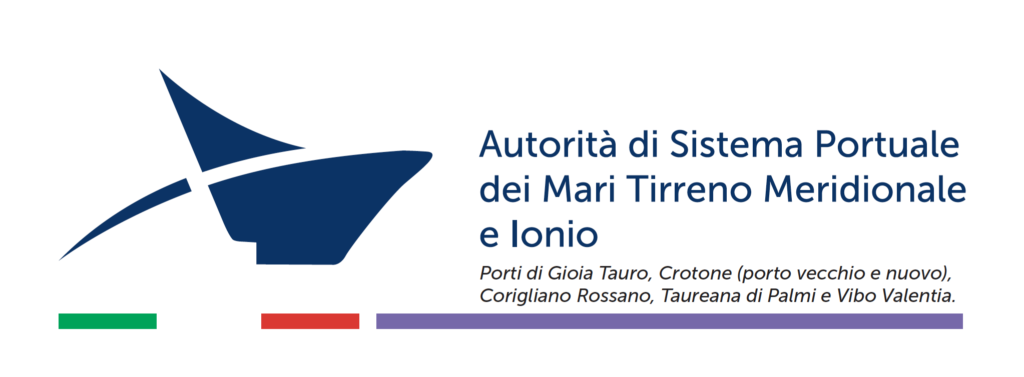
The Port network of the Calabrian Sea gathers together the Ports of Crotone, Corigliano Calabro and Vibo Marina, along the Terranean coast (Vibo Marina) and Ionian Coast (Crotone and Corigliano Calabro).
These port infrastructures are connected to the rail and road network and served by the major international calabrian airport of Lamazia Terme and the regional airport of Crotone.
The port of Crotone is the port of Magna Greece, overlooks the central part of the Ionian coast of Calabria. It consists in two adjacent basins (Old Port and New Port) that are not connected with each other. The port settlement is deeply connected to the urban structure of the city where its development is particularly influenced by the former. As early as the eighth century BC – the year of foundation of Crotone – the Greek colonists established, through the centrality of the port trade exchanges with all the Hellinic peninsula.
Main maritime center of Ionian Calabria, provincial capital since 1994, the city is the heir of the Greek “Kroton”, of Achaean foundation, in the moment of greatest splendor governed by Pythagoras and victorious over the nearby Sibari, with 12 kilometers of walls on the one and the other side of the Esaro. On the site of the acropolis is the castle and the sixteenth-century bulwarks of Viceroy Pedro de Toledo, intended to defend against Turkish naval incursions, surround the old city and its intricate streets. A few kilometers separate the port from Capo Colonna, the easternmost point of the Ionian coast, where the important sanctuary of Hera Lacinia stood, a complex of buildings within a fortified circle and surrounded by a sacred wood; the column of a Doric temple stands alone on the archaeological site; the surrounding coast falls within the perimeter of the Capo Rizzuto Marine Reserve. Inland lies the Marquisate, a large
The port of Corigliano Calabro is located on the high Ionic of Calabria, at the center of the homonymous gulf, is part of the wider Gulf of Taranto. Corigliano Calabro, Curjeni in Coriglianese, is a village in the Lower Ionian Cosentino located on the Serratore hill at 210 meters above sea level. Built as a military fortress in 1073, the Corigliano Castle underwent a series of transformations over time. Its territory falls within the production area of Bruzio DOP Colline Jonico-Presilane extra virgin olive oil and Calabrian licorice. The best in the world! This infrastructure is strategic, given the position that makes it attractive even to cruise ships and pleasure craft traffic. The terrain is characterized by thick woods of chestnuts, beeches, holm oaks and white firs plus olives and vine cultivations, centuries-old torrents and overhanging coastal cliffs covered by ferns, strawberry trees, myrtles, oleander and cactus pears.
The port of Vibo Valentia Marina is in the southern part of the Gulf of St. Euphemia of Lamezia.
The roots of the city are very ancient and date back to the Neolithic era (6th millennium BC), but substantial traces are the Greek walls of the 6th century BC, of which important traces are still preserved today, represented by the plans of the circular towers. There are numerous patrician palaces that make up the historic center, in the upper part of the city, and which allow the visitor to gradually approach its Castle. Like the ancient Greek centers, the Norman-Swabian castle of Vibo Valentia stands on the acropolis, the upper part of the city, to have total control over the surrounding area. The original structure dates to the twelfth century with interventions due to Charles of Anjou in the thirteenth. It was then the Aragonese who expanded it, but the terrible earthquake of 1783 (which destroyed numerous Calabrian centers) brought it to its current conformation. Since 1969 the castle has housed the Vito Capialbi State Archaeological Museum, rich in ancient archaeological finds. Divided into four sections (sacred buildings, necropolis, private collections and Roman times), one of them houses a sword from the 13th century BC. and other unique testimonials.
The Port of Crotone is an important tourist destination in Southern Italy, offering an ageless Italian lifestyle. Must-see attractions in Crotone include the Castle of Charles V, Old town of Crotone, Le Castella (Island of Capo Rizzuto), and the Capo Colonna Archeological Park. The Port of Corigliano Calabro is another popular destination, featuring the Castello Ducale, Ponte Canale, and Chiesa di Sant’ Antonio. Finally, the Port of Vibo Valentia Marina offers attractions such as the Norman Castle – Swabian, Archaeological Museum “Vito Capialbi”, Hipponion Greek Walls, and Piedigrotta Church.

Maximum
ship dimensions for berth



| Year | Passengers (Pax) | Calls |
|---|---|---|
| 2010 | 600 | 3 |
| 2011 | 800 | 2 |
| 2012 | 1,600 | 4 |
| 2013 | 2,590 | 7 |
| 2014 | 3,320 | 3 |
| 2015 | 13,868 | 8 |
| 2016 | 13,758 | 5 |
| 2017 | 4,139 | 2 |
| 2018 | 8,463 | 12 |
| 2019 | 5,250 | 9 |
| 2020 | 1,562 | 3 |
| 2021 | 600 | 4 |
| 2022 | 20,901 | 25 |
| 2023 | 29,660 | 28 |
| 2024 | 25,913 | 21 |


